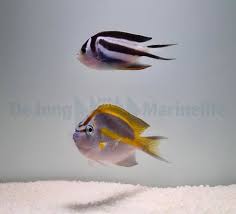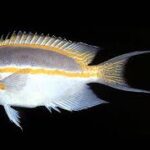The Emergence of Dragons in Mythological Tales of the Creation of the Universe

Dragons have long held a revered place in global mythology, especially within the context of creation myths. In Chinese culture, dragons are more than mythical creatures; they symbolize cosmic power, transformation, and the balance between heaven, earth, and the elements. The role of dragons in the creation stories of the universe is particularly significant. Their presence in these ancient narratives is often symbolic of life-giving forces, cosmic energy, and the delicate balance between chaos and order. This article explores the emergence of dragons in the mythology surrounding the creation of the universe, focusing on Chinese traditions, their deep symbolism, and how these celestial creatures embody essential roles in the shaping of existence.
Dragons and the Chinese Creation Myths
In Chinese mythology, the dragon is far more than a mere creature of legend. It represents powerful forces, both destructive and generative, with deep ties to the elements of nature. The presence of dragons in Chinese creation myths reflects their connection to the cosmos and their essential role in shaping the world.
The Creation of the Universe: Pangu and the Cosmic Egg
One of the most widely known creation myths in Chinese tradition is the story of Pangu, the giant who created the universe. According to the myth, in the beginning, the universe existed as a chaotic and formless mass, encapsulated in a cosmic egg. Inside this egg, the forces of yin and yang were in balance, but it was a state of undifferentiated chaos. After 18,000 years, the egg cracked open, and Pangu emerged.
Pangu is often depicted as a giant, but in some versions of the myth, he is also associated with the dragon. In one interpretation, Pangu’s body was linked to the elements of the universe, and upon his death, his body transformed into the physical world. Some traditions hold that a dragon helped Pangu separate the earth and sky, using its mighty powers to shape the universe and bring structure to chaos. As Pangu’s physical form disintegrated after his death, his body became the earth, his breath became the wind, and his eyes became the sun and moon.
In this creation myth, the dragon is a celestial helper, one of the most powerful forces in the universe, aiding in the formation of the world. The dragon’s role as a mediator between the forces of heaven and earth is clear, signifying its crucial role in the cosmic balance. Its appearance in this creation story ties it to the birth of the cosmos itself, making it one of the most important creatures in Chinese mythology.
The Dragon and the Role of the Heavenly Emperor
In some interpretations of Chinese creation myths, the dragon plays an even more significant role in shaping the world. The celestial dragon is often linked to the Heavenly Emperor, who governs the universe. In these myths, the dragon serves as a symbol of the emperor’s divine authority and his role as the ruler of the universe. The dragon is seen as the creator and protector of the celestial order, ensuring that balance and harmony are maintained in the cosmos.
According to one story, in the earliest stages of creation, the Heavenly Emperor summoned the dragon to help shape the world. The dragon’s immense power was necessary to bring order to chaos and separate the elements. The dragon helped the Emperor create the world by manipulating the flow of energy and bringing balance to the forces of nature. It is said that the dragon’s breath shaped the rivers, while its movements created mountains and valleys, contributing to the geographical features of the land.
This version of the creation story portrays the dragon not only as a cosmic force but as a collaborator in the very creation of existence. The dragon’s influence in these myths is not limited to one specific aspect of creation but spans the entire process of cosmic formation, reinforcing its status as a powerful, world-shaping creature.
The Dragon in Other Mythological Creation Stories
Beyond Chinese mythology, dragons appear in a variety of mythological traditions as agents of creation. While each culture’s version of the dragon may differ in form and symbolism, the central idea of dragons being involved in the formation of the universe and life remains consistent. These dragons are often viewed as powerful, primordial beings who have the ability to shape and control the forces of nature.
The Role of Dragons in Other Cultures
In various other cultures, dragons appear in creation myths that reflect their connections to elemental forces, especially water, fire, and the sky. For example, in Hindu mythology, the Naga, a serpent-like deity that shares many traits with dragons, is said to have played a role in the churning of the ocean to obtain the nectar of immortality, known as amrita. In this context, the Naga’s actions symbolize the vital process of creation and transformation.
Similarly, in Norse mythology, the dragon Nidhogg is portrayed as a creature that gnaws at the roots of Yggdrasil, the great tree of life. While Nidhogg is often depicted in a more destructive role, its actions also signify the cyclical nature of life and death in the cosmos. Dragons in these myths are often seen as guardians of primal forces, whether they are nurturing creation or facilitating transformation.
Even in Western mythology, where dragons are often regarded as destructive forces, their role in creation is still significant. In some ancient Greek myths, dragons are portrayed as protectors of sacred places or objects, guarding the entrances to the underworld or the treasures of the gods. These dragons are often associated with the divine and serve as intermediaries between gods and humans, further emphasizing their integral role in cosmic balance.
The Dragon as the Embodiment of Cosmic Forces
In many creation myths, the dragon is not merely a physical creature but a representation of cosmic forces that are vital to the universe’s creation and ongoing existence. The dragon’s connection to water, fire, and air reflects its role as a force of transformation, constantly shaping the world around it. The fluidity of the dragon’s movements often symbolizes the flow of energy throughout the universe, while its breath and fiery power represent the life-giving and destructive forces that are essential to creation.
The idea of the dragon as a force of transformation is seen in several creation myths where dragons are depicted as shapeshifters or beings capable of manipulating the elements. In Chinese mythology, the dragon’s ability to control the weather, bring rain, and control the flow of water directly ties it to the life-giving forces of creation. This power is particularly important in a civilization that relied on agriculture and the seasonal rhythms of the land.
In other traditions, such as Celtic or Slavic mythology, dragons are seen as primal creatures that protect the sacred order of the world. Their involvement in the creation process is linked to the preservation of harmony between the forces of nature. These dragons are guardians, ensuring that the natural world remains in balance and that the flow of cosmic energy continues without disruption.
The Dragon as a Symbol of the Cosmic Balance
One of the most intriguing aspects of the dragon’s role in creation myths is its symbolic representation of balance. In Chinese mythology, dragons often embody the dual forces of yin and yang, which are fundamental to Chinese philosophy. While yin represents the passive, feminine, and negative forces of the universe, yang embodies the active, masculine, and positive forces. The dragon, as a creature that can move between the earth and the heavens, represents the interplay of these forces and their constant interaction.
The dragon’s connection to the heavens and its ability to control water and other elements make it a key figure in maintaining this balance. In some myths, the dragon’s power is called upon to restore order when chaos threatens to overwhelm the world. By acting as a mediator between opposing forces, the dragon ensures that harmony is preserved in the cosmos. Its role in creation is not only to shape the world but to ensure that it remains in balance, free from the chaos that preceded it.
The Dragon’s Continuing Influence in Modern Culture
Although the ancient myths surrounding the dragon’s role in the creation of the universe have been passed down through generations, their influence continues to be felt in modern Chinese culture and beyond. The dragon remains a symbol of power, vitality, and protection, and it continues to play an important role in Chinese festivals, artwork, and literature. Its association with creation and cosmic forces endures, reminding people of the ancient belief in the dragon’s role as a creator and protector of the world.
In contemporary Chinese culture, the dragon is often seen as a symbol of good fortune and prosperity, continuing its legacy as a life-giving and transformative force. The dragon’s role in Chinese culture is not limited to the past but remains an enduring emblem of the nation’s deep connection to its ancient myths and beliefs.
Conclusion
The emergence of the dragon in the mythology surrounding the creation of the universe represents one of the most fascinating aspects of global folklore. In Chinese mythology, the dragon is portrayed as a powerful, life-giving creature that shapes the cosmos and ensures harmony between the forces of nature. Its presence in creation myths reflects the deep reverence for the dragon as a cosmic force and protector of balance.
Across cultures, dragons serve as symbols of transformation, guardians of sacred order, and intermediaries between the divine and the earthly realms. In the creation stories of the universe, dragons embody the primal forces that shape existence, ensuring that chaos is tamed and harmony prevails. These ancient myths continue to influence the way dragons are viewed today, reinforcing their status as one of the most enduring symbols of power, vitality, and cosmic balance in world mythology.

